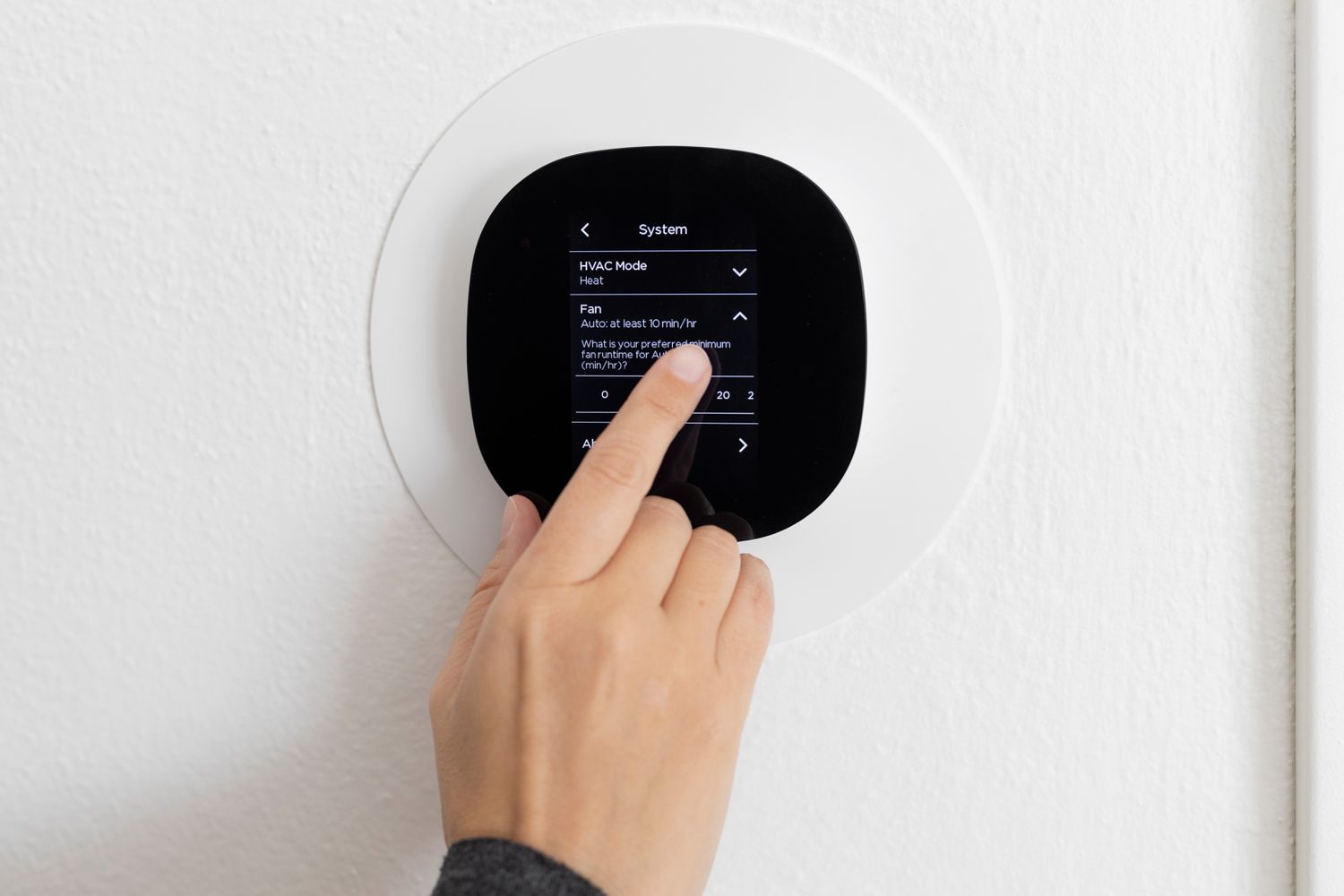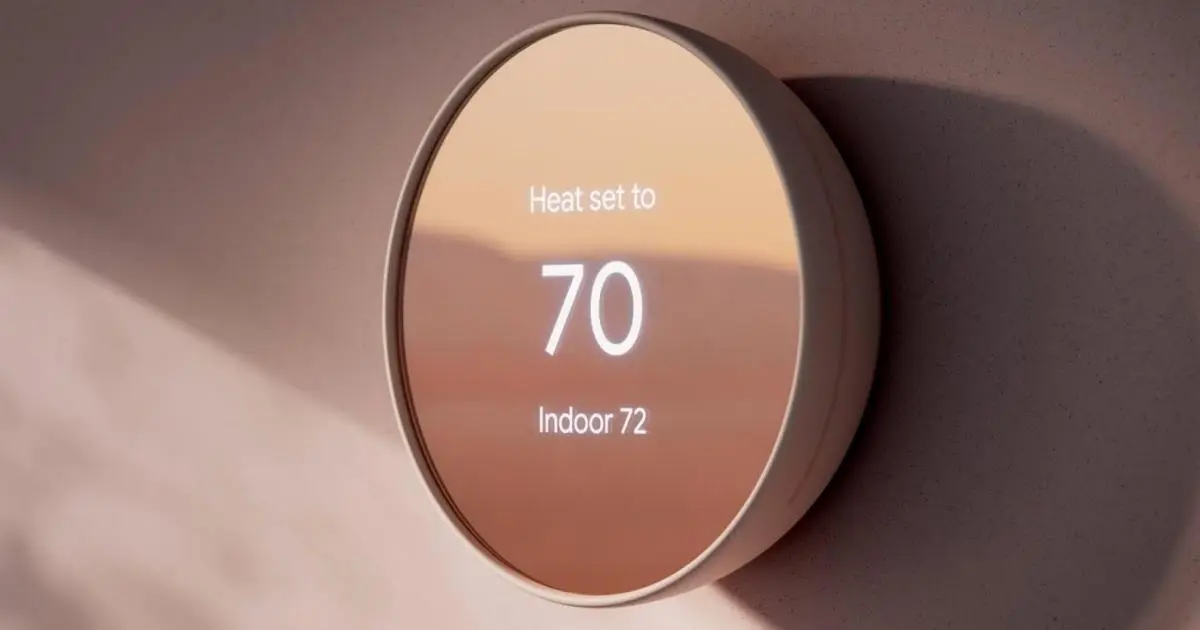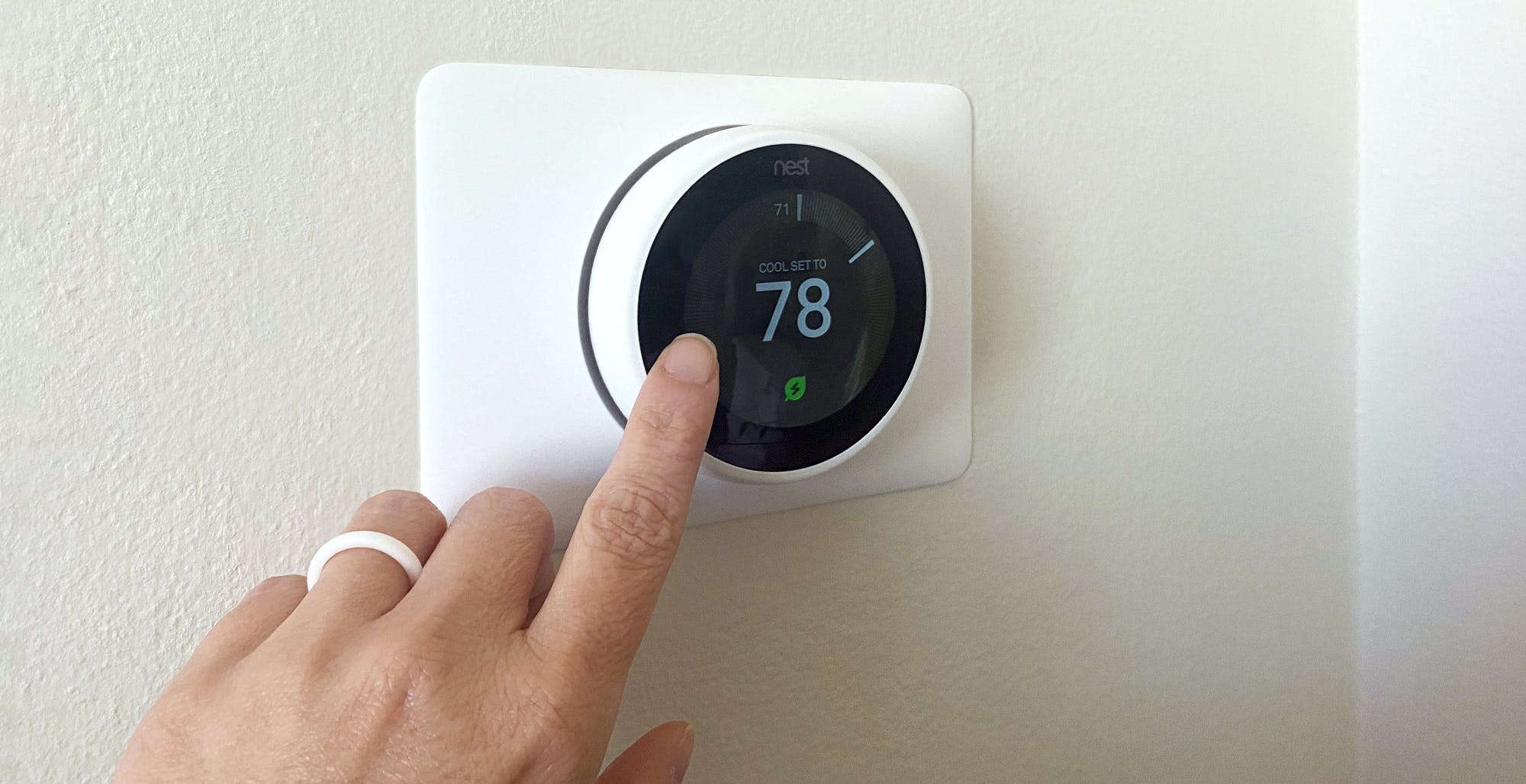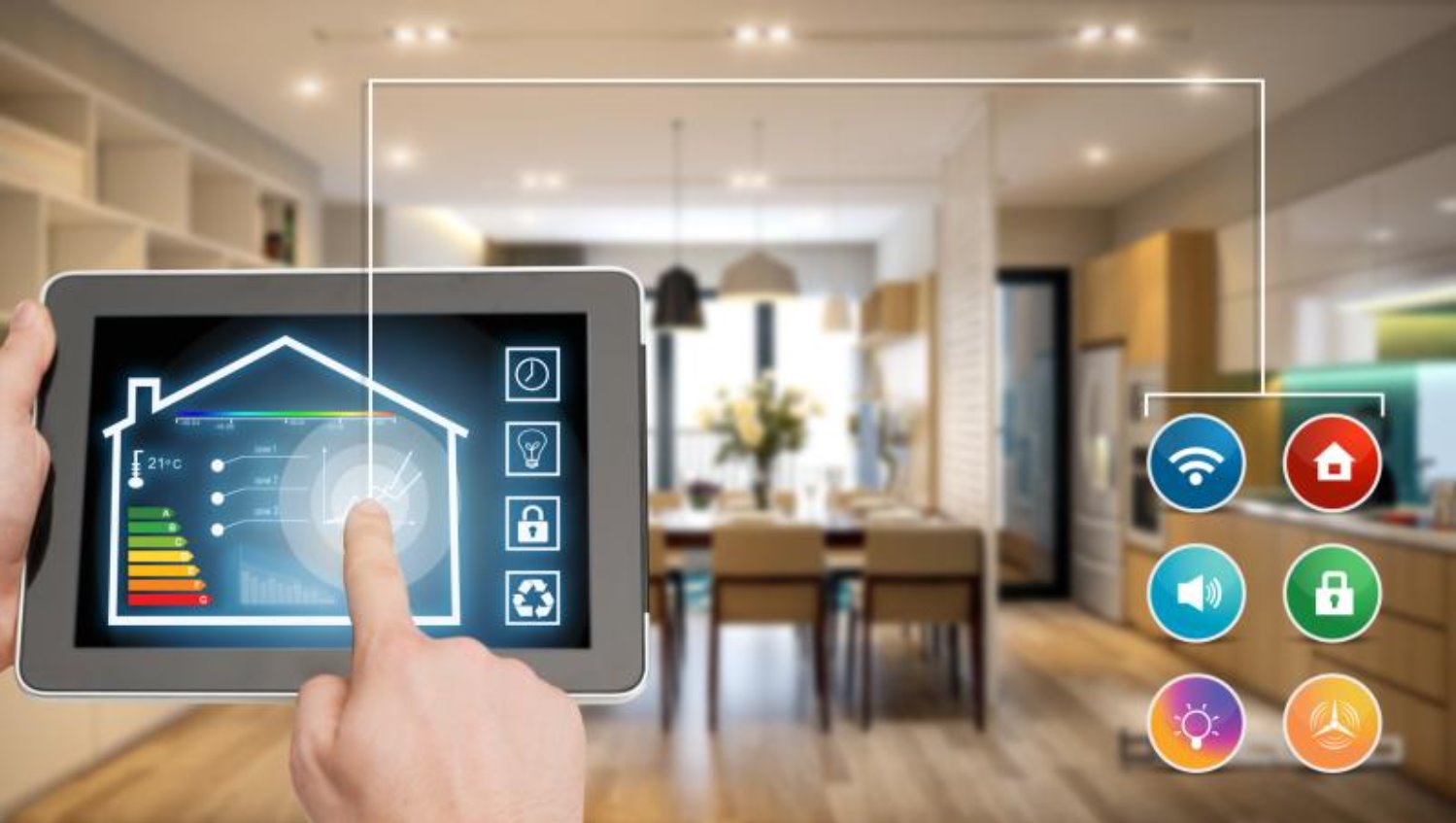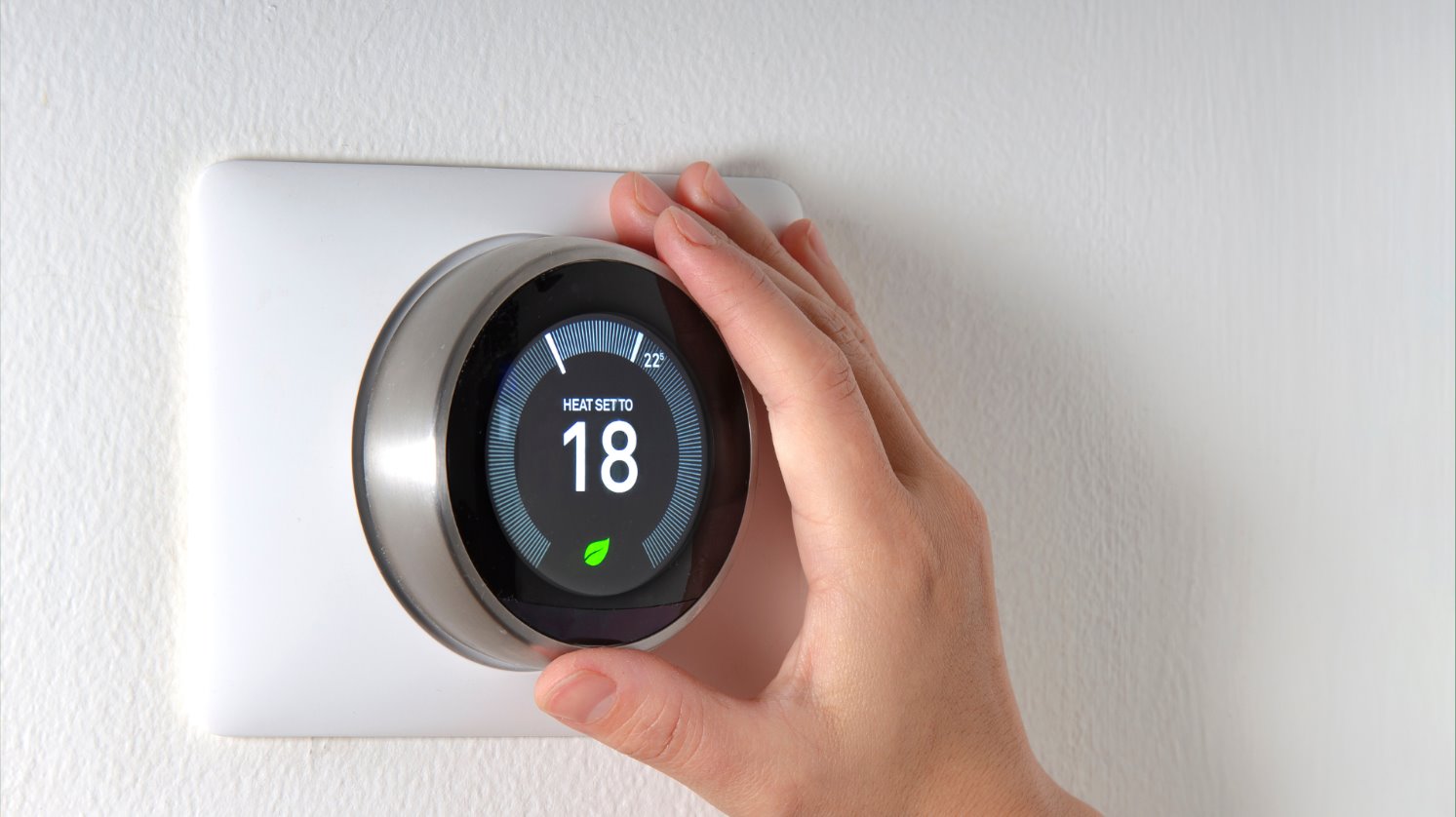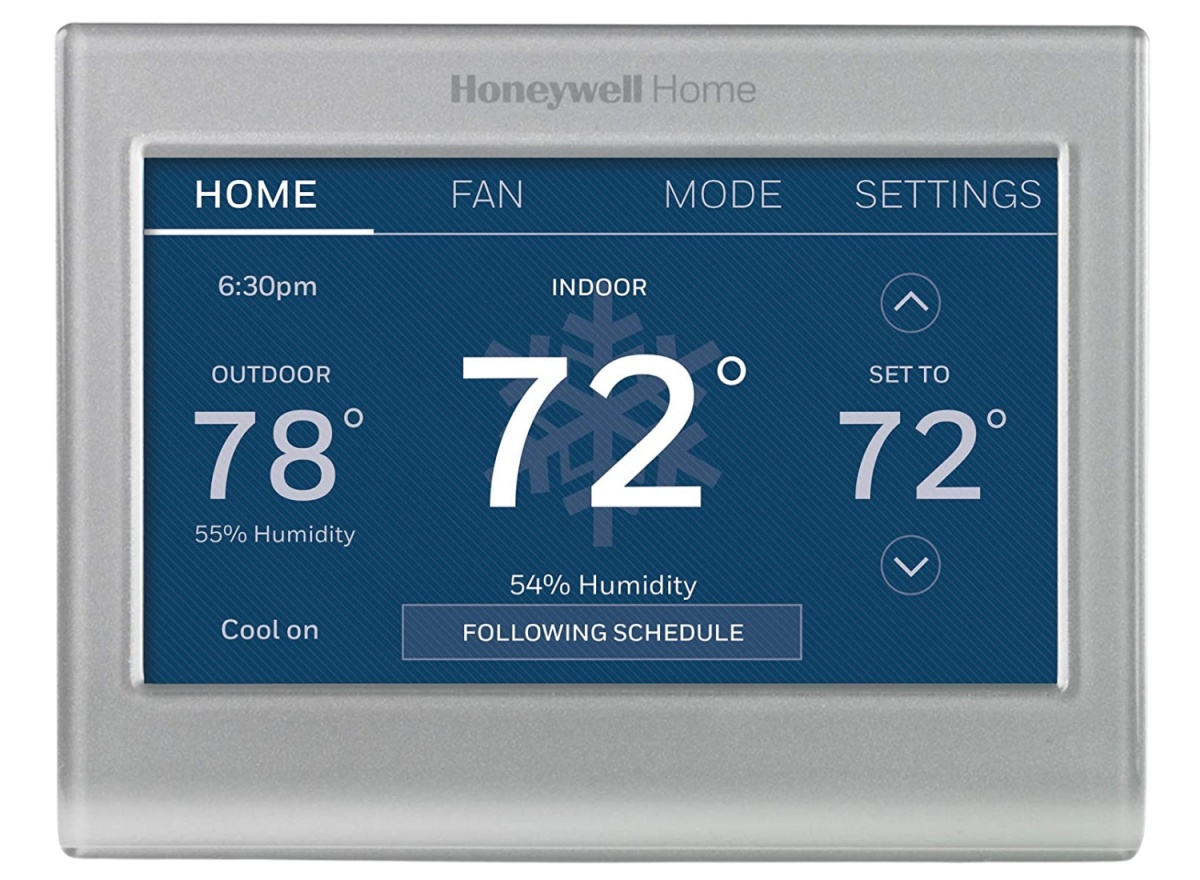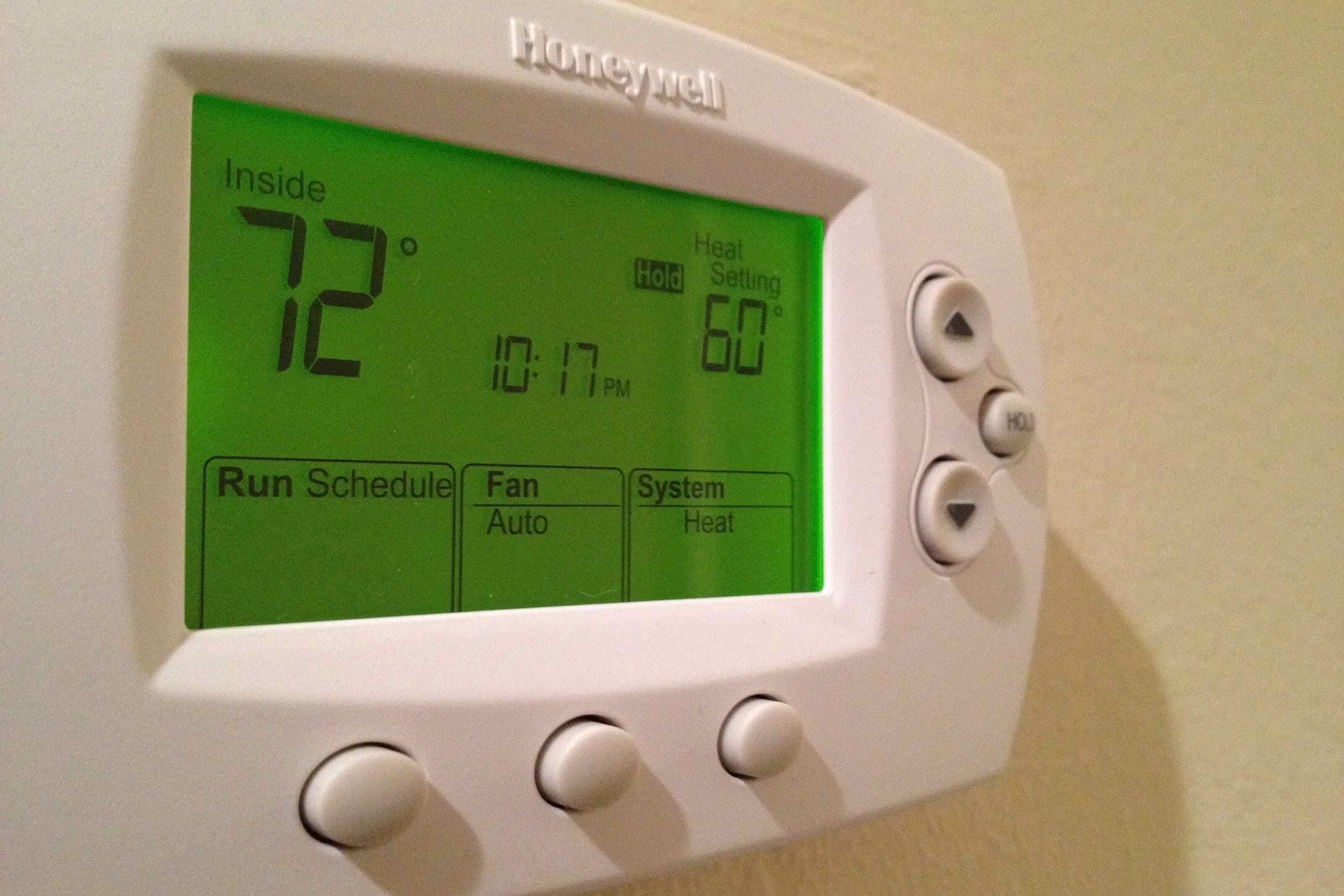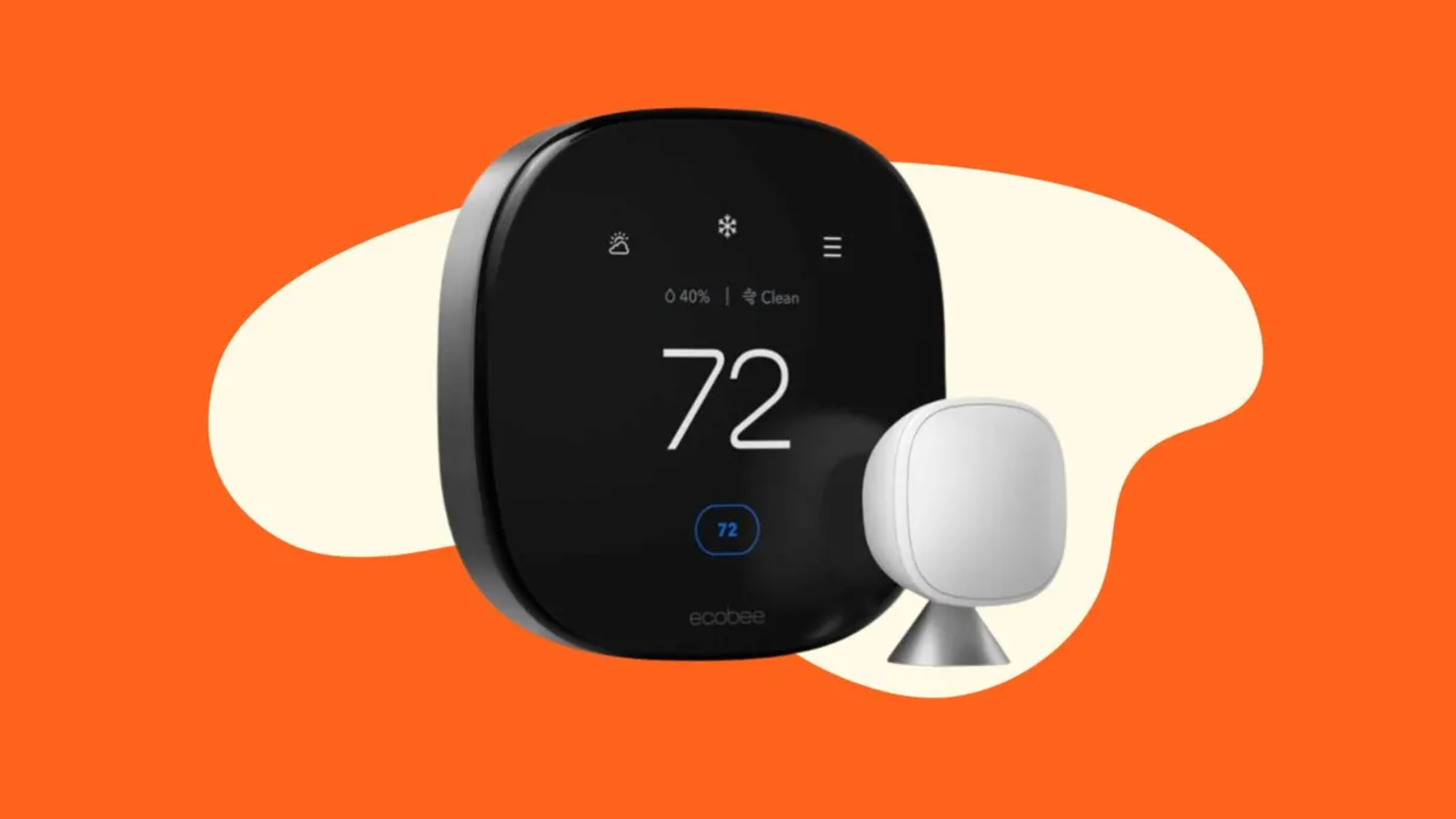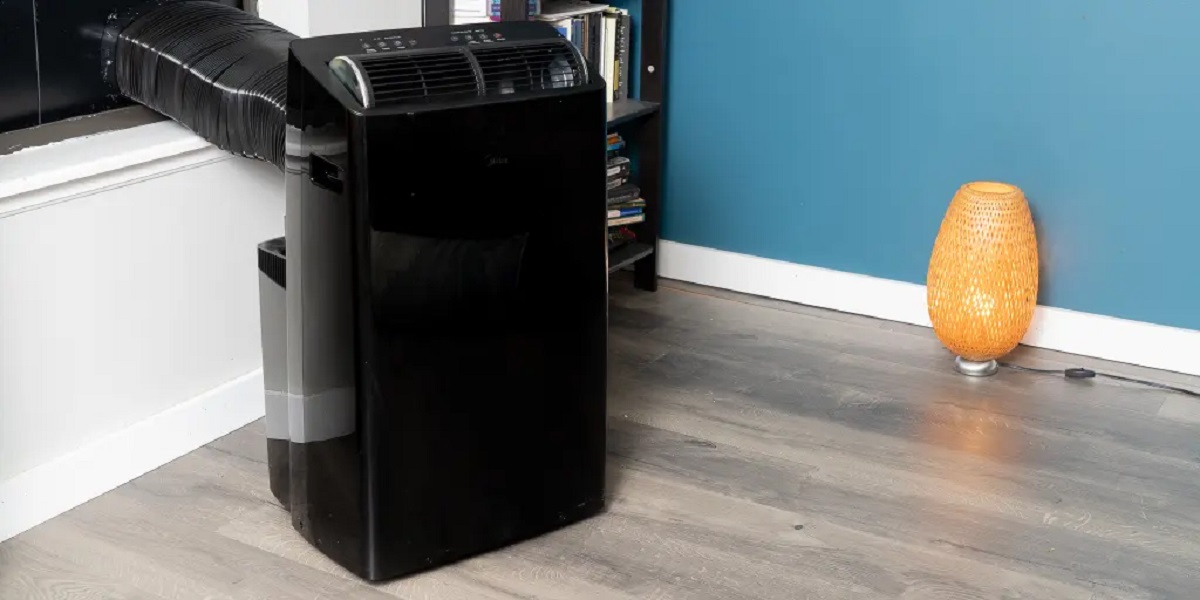Introduction
Welcome to the future of home climate control! Smart thermostats are revolutionizing the way we manage our home temperatures, offering convenience, energy savings, and enhanced comfort. These innovative devices utilize advanced technology to learn your preferences, adapt to your schedule, and even allow remote control via smartphone apps. In this comprehensive guide, we will walk you through everything you need to know about programming a smart thermostat, from understanding the basics to troubleshooting common issues.
As technology continues to evolve, smart thermostats have become an integral component of modern homes, offering a seamless blend of functionality and eco-friendliness. By harnessing the power of artificial intelligence and connectivity, these devices not only provide personalized comfort but also contribute to energy conservation and cost efficiency.
Throughout this guide, we will delve into the intricacies of selecting, installing, setting up, and programming a smart thermostat, ensuring that you are equipped with the knowledge to optimize your home's heating and cooling systems. Whether you are a tech-savvy enthusiast or a newcomer to smart home devices, this guide will empower you to make the most of your smart thermostat and reap the benefits it has to offer.
So, let's embark on this journey into the realm of smart thermostats and unlock the potential to create a comfortable, energy-efficient, and connected home environment. Whether you're looking to reduce your energy bills, customize your home's temperature settings, or simply embrace the convenience of remote access, this guide will provide you with the insights and know-how to make the most of your smart thermostat. Let's get started!
Understanding Smart Thermostats
Smart thermostats represent a significant advancement in home climate control technology, offering a range of features that set them apart from traditional thermostats. At their core, smart thermostats are designed to intelligently regulate indoor temperatures while providing users with unprecedented levels of customization and control. These devices are equipped with sensors, Wi-Fi connectivity, and advanced algorithms that enable them to learn user preferences, adapt to daily routines, and optimize energy usage.
One of the key features of smart thermostats is their ability to learn from user behavior and adjust temperature settings accordingly. This learning capability, often referred to as “smart learning” or “adaptive intelligence,” allows the thermostat to create personalized heating and cooling schedules based on occupancy patterns and temperature preferences. Over time, the thermostat fine-tunes its settings to maximize comfort while minimizing energy consumption, ultimately leading to cost savings and reduced environmental impact.
Furthermore, smart thermostats offer remote access and control through dedicated mobile apps or web interfaces. This means that users can adjust their home’s temperature settings from anywhere, providing unparalleled convenience and flexibility. Whether you’re returning home earlier than expected or planning to adjust the temperature while away on vacation, the ability to remotely control your thermostat ensures that your home is always at the ideal temperature when you need it to be.
In addition to personalized scheduling and remote access, smart thermostats often feature energy usage reports and insights. By monitoring and analyzing energy consumption, these devices empower users to make informed decisions about their heating and cooling habits, fostering a more energy-efficient household. Some smart thermostats even provide tips and recommendations for optimizing energy usage, helping users further reduce their environmental footprint.
As you delve deeper into the realm of smart thermostats, it’s essential to understand the diverse range of models and brands available in the market. From basic programmable thermostats to advanced, AI-powered models, the options can be overwhelming. By gaining a comprehensive understanding of smart thermostat capabilities and features, you can make an informed decision when selecting the best fit for your home and lifestyle.
By grasping the fundamental principles and capabilities of smart thermostats, you can harness their potential to create a comfortable, energy-efficient, and connected home environment. In the following sections, we will explore the process of choosing, installing, setting up, and programming a smart thermostat, providing you with the knowledge and confidence to optimize your home’s climate control system.
Choosing the Right Smart Thermostat
When it comes to selecting a smart thermostat for your home, several factors should be taken into consideration to ensure that the chosen device aligns with your specific needs and preferences. From compatibility with your HVAC system to the range of features offered, making an informed decision is crucial in optimizing your home’s climate control. Here are key considerations to keep in mind when choosing the right smart thermostat:
- Compatibility: Before making a purchase, it’s essential to verify whether the smart thermostat is compatible with your heating, ventilation, and air conditioning (HVAC) system. Some systems may require specific thermostat models or additional accessories for seamless integration.
- Features: Evaluate the features offered by different smart thermostat models, such as smart learning capabilities, remote access, energy usage reports, and compatibility with voice assistants. Consider which features are essential for your lifestyle and home environment.
- User Interface: Assess the user interface and ease of use. A clear, intuitive interface and user-friendly controls can significantly enhance the overall experience of interacting with the smart thermostat.
- Integration: If you have other smart home devices or use a specific smart home ecosystem (e.g., Google Home, Amazon Alexa, Apple HomeKit), ensure that the smart thermostat is compatible and seamlessly integrates with your existing setup.
- Design and Aesthetics: Consider the design and aesthetics of the smart thermostat, as it will be a visible component of your home. Choose a model that complements your interior decor and aligns with your preferences.
- Brand Reputation and Support: Research the reputation of the smart thermostat’s manufacturer and the availability of customer support. Opting for a reputable brand with responsive customer service can provide peace of mind and reliable assistance when needed.
Additionally, it’s important to determine whether you prefer a basic programmable smart thermostat or a more advanced model with AI-powered features and enhanced customization options. Understanding your specific requirements, budget, and long-term expectations can guide you in selecting the right smart thermostat that will seamlessly integrate into your home and enhance your overall comfort and energy efficiency.
By carefully considering these factors and conducting thorough research, you can confidently choose a smart thermostat that aligns with your unique preferences and contributes to a more connected, energy-conscious home environment. Once you’ve selected the ideal smart thermostat, the next step is to proceed with its installation, a process that we will explore in the following section.
Installing Your Smart Thermostat
As you embark on the journey of integrating a smart thermostat into your home, the installation process plays a pivotal role in ensuring seamless functionality and optimal performance. While the specific steps may vary based on the smart thermostat model and your HVAC system, the following general guidelines will provide you with a foundational understanding of the installation process:
- Pre-Installation Considerations: Before initiating the installation, it’s essential to turn off the power to your HVAC system at the circuit breaker to ensure safety. Additionally, carefully review the installation instructions provided by the smart thermostat manufacturer to familiarize yourself with the process.
- Remove the Old Thermostat: If you have an existing thermostat, begin by carefully removing it from the wall. This typically involves unscrewing the thermostat’s mounting plate and disconnecting the wires from the terminals. It’s crucial to label the wires according to their corresponding terminals to facilitate the connection of the new smart thermostat.
- Mounting the New Thermostat: Once the old thermostat has been removed, proceed to mount the new smart thermostat’s base onto the wall. Ensure that the base is level and securely attached, as it will serve as the foundation for the smart thermostat’s display and controls.
- Wiring and Connection: With the base securely mounted, carefully connect the labeled wires from your HVAC system to the corresponding terminals on the smart thermostat’s base. Refer to the installation manual to accurately identify the correct terminals for each wire, ensuring a proper connection.
- Power On and Configuration: After the wiring is complete, restore power to your HVAC system at the circuit breaker. The smart thermostat should power on, prompting you to configure initial settings such as language, Wi-Fi connection, and system compatibility. Follow the on-screen prompts provided by the thermostat to complete the setup process.
- Testing and Calibration: Once the smart thermostat is successfully installed and configured, perform a series of tests to ensure that it accurately communicates with your HVAC system and effectively controls the temperature. Verify that the heating and cooling functions operate as intended, and make any necessary adjustments to calibration settings.
It’s important to note that if you encounter any challenges during the installation process or are unsure about specific steps, it’s advisable to seek professional assistance from a qualified HVAC technician or an electrician. Proper installation is crucial for the optimal performance of your smart thermostat and the safety of your home’s HVAC system.
By following these installation guidelines and exercising caution throughout the process, you can successfully integrate your smart thermostat into your home, paving the way for enhanced comfort, energy efficiency, and the utilization of advanced climate control features. With the smart thermostat securely installed, the next step is to proceed with setting up and configuring its personalized settings, a process that we will explore in the following section.
Setting Up Your Smart Thermostat
Once your smart thermostat is successfully installed, the next crucial step is to set it up and configure the personalized settings to align with your lifestyle and preferences. This phase involves establishing initial parameters, connecting the thermostat to your Wi-Fi network, and customizing settings to optimize energy efficiency and comfort. Here’s a guide to effectively setting up your smart thermostat:
- Initial Configuration: Begin by powering on the smart thermostat and following the on-screen prompts to set the date, time, and basic preferences. Some smart thermostats may guide you through an initial setup wizard to establish fundamental settings such as language, unit preferences (Celsius or Fahrenheit), and system type (e.g., single-stage, multi-stage).
- Wi-Fi Connection: Most smart thermostats require a Wi-Fi connection to enable remote access and advanced features. Access the thermostat’s settings menu to initiate the Wi-Fi setup process, which typically involves selecting your network, entering the Wi-Fi password, and allowing the thermostat to establish a secure connection to your home network.
- Software Updates: Check for and install any available software updates for your smart thermostat to ensure that it is running the latest firmware. Regular updates can introduce new features, enhance performance, and address potential security vulnerabilities.
- Customized Scheduling: Utilize the smart thermostat’s scheduling capabilities to create personalized heating and cooling schedules that align with your daily routines. This may involve setting different temperature levels for specific times of the day, optimizing energy usage during periods of absence, and ensuring comfort upon your return home.
- Temperature Preferences: Configure temperature preferences for different scenarios, such as “Home,” “Away,” and “Sleep.” By customizing temperature settings for various situations, you can ensure optimal comfort while maximizing energy efficiency based on your occupancy patterns.
- Integration with Voice Assistants: If your smart thermostat is compatible with voice assistants such as Amazon Alexa or Google Assistant, proceed to integrate it with your preferred voice control platform. This integration allows you to adjust temperature settings using voice commands, enhancing the convenience of managing your home’s climate control.
Throughout the setup process, it’s essential to refer to the smart thermostat’s user manual and online resources provided by the manufacturer to leverage the full range of features and customization options available. Additionally, take the time to explore the thermostat’s interface and familiarize yourself with its controls, as this will facilitate seamless interaction and adjustment of settings as needed.
By diligently configuring the settings and preferences of your smart thermostat, you can harness its advanced capabilities to create a tailored climate control experience that optimizes comfort, energy efficiency, and convenience. With the thermostat fully set up and personalized, the next step is to delve into the process of programming it to align with your specific heating and cooling requirements, a topic that we will explore in the following section.
Programming Your Smart Thermostat
Programming your smart thermostat is a pivotal aspect of optimizing its performance and energy efficiency, as it allows you to establish customized heating and cooling schedules that align with your daily routines and occupancy patterns. By leveraging the scheduling capabilities of your smart thermostat, you can ensure comfortable temperatures when needed while conserving energy during periods of absence. Here’s a comprehensive guide to effectively programming your smart thermostat:
- Daily Schedules: Begin by creating a daily schedule that reflects your typical routine. This may involve setting specific temperature levels for morning, daytime, evening, and nighttime periods, considering your occupancy and comfort preferences during each segment of the day.
- Occupancy-Based Settings: Some smart thermostats offer occupancy detection features that adjust temperature settings based on movement within the home. Utilize these features to optimize energy usage by reducing heating or cooling when the home is unoccupied and restoring comfortable temperatures upon occupancy.
- Vacation and Absence Modes: Take advantage of vacation and absence modes to temporarily adjust your smart thermostat’s settings when you are away for an extended period. By setting energy-saving temperatures during these periods, you can minimize energy consumption without compromising the integrity of your home’s HVAC system.
- Temperature Overrides: Familiarize yourself with the process of manually overriding programmed settings when immediate adjustments are necessary. Most smart thermostats allow temporary overrides to accommodate unexpected changes in your schedule or comfort requirements.
- Adaptive Learning Features: If your smart thermostat incorporates adaptive learning capabilities, allow the thermostat to observe and adapt to your temperature preferences and occupancy patterns over time. This feature enables the thermostat to autonomously optimize its settings based on your behavior, enhancing comfort and energy efficiency.
- Review and Refinement: Periodically review and refine your programmed schedules to align with any changes in your routine or seasonal adjustments. As your lifestyle evolves, updating the thermostat’s schedules ensures that it continues to effectively meet your heating and cooling needs.
By proactively programming your smart thermostat to accommodate your unique schedule and occupancy patterns, you can enjoy a harmonious balance of comfort and energy efficiency within your home. Additionally, the ability to remotely adjust and refine the thermostat’s settings via smartphone apps or web interfaces provides unparalleled convenience and flexibility in managing your home’s climate control.
As we continue our exploration of smart thermostat utilization, the next section will delve into the process of connecting your smart thermostat to your Wi-Fi network, unlocking its remote access capabilities and enabling seamless integration with your smart home ecosystem.
Connecting Your Smart Thermostat to Wi-Fi
Connecting your smart thermostat to your home Wi-Fi network is a pivotal step that unlocks a myriad of advanced features, including remote access, energy usage monitoring, and seamless integration with smart home ecosystems. The process of establishing a Wi-Fi connection for your smart thermostat is straightforward and can be accomplished using the following general guidelines:
- Accessing Wi-Fi Settings: Begin by navigating to the Wi-Fi settings menu on your smart thermostat’s display or within the accompanying mobile app. This menu typically provides options to scan for available networks and initiate the connection process.
- Selecting the Network: Choose your home Wi-Fi network from the list of available networks displayed on the thermostat’s interface. If your network is not visible, you may need to manually enter the network name (SSID) and password.
- Entering Wi-Fi Credentials: Once the network is selected, enter the Wi-Fi password using the thermostat’s interface or the mobile app. Ensure that the password is entered accurately to facilitate a successful connection.
- Establishing the Connection: After entering the Wi-Fi credentials, the smart thermostat will attempt to establish a secure connection to your home network. This process may take a few moments, during which the thermostat communicates with the Wi-Fi router and obtains an IP address.
- Verification and Confirmation: Upon successful connection, the smart thermostat will display a confirmation message or indicator to signify that it is now linked to your Wi-Fi network. This confirmation indicates that the thermostat can now communicate with your home network and the associated cloud services.
- Remote Access and Integration: With the smart thermostat connected to Wi-Fi, you can now utilize remote access features, allowing you to adjust temperature settings, monitor energy usage, and receive notifications via dedicated mobile apps or web interfaces. Additionally, Wi-Fi connectivity enables seamless integration with voice assistants and other smart home devices, expanding the thermostat’s functionality and convenience.
By establishing a robust Wi-Fi connection for your smart thermostat, you can leverage its full range of capabilities and access advanced features that enhance the overall control and efficiency of your home’s climate management. Remote access empowers you to adjust temperature settings from anywhere, ensuring comfort and energy savings, while integration with smart home ecosystems fosters a cohesive and interconnected living environment.
As we progress through our exploration of smart thermostat utilization, the following section will delve into the diverse features and capabilities offered by smart thermostats, empowering you to make the most of these innovative devices within your home.
Using Smart Thermostat Features
Smart thermostats offer an array of advanced features that go beyond basic temperature control, providing a comprehensive suite of capabilities designed to enhance comfort, energy efficiency, and user convenience. By familiarizing yourself with these features, you can harness the full potential of your smart thermostat and optimize its performance within your home environment. Here are key features and functionalities commonly found in smart thermostats:
- Smart Learning: Many smart thermostats incorporate smart learning algorithms that adapt to your temperature preferences and daily routines over time. By observing your behavior, the thermostat autonomously adjusts its settings to maximize comfort and energy efficiency.
- Remote Access: The ability to remotely control your smart thermostat via dedicated mobile apps or web interfaces offers unparalleled convenience. Whether you’re at home or away, remote access allows you to adjust temperature settings, monitor energy usage, and receive alerts and notifications.
- Energy Usage Reports: Smart thermostats often provide detailed energy usage reports and insights, empowering you to make informed decisions about your heating and cooling habits. These reports can highlight opportunities for energy conservation and cost savings.
- Voice Control Integration: Compatibility with popular voice assistants such as Amazon Alexa, Google Assistant, or Apple HomeKit allows you to adjust temperature settings using voice commands. Voice control integration enhances the convenience of managing your home’s climate control system.
- Geofencing: Some smart thermostats utilize geofencing technology to detect when you are approaching or leaving home, automatically adjusting temperature settings based on your proximity. This feature optimizes energy usage by minimizing heating or cooling when the home is unoccupied.
- Zoning and Room Sensors: Advanced smart thermostats may support zoning capabilities and room sensors, enabling precise temperature control in specific areas of your home. Zoning and sensors contribute to personalized comfort and targeted energy management.
- Schedule Optimization: Smart thermostats offer schedule optimization features that analyze your heating and cooling patterns, fine-tuning schedules to maximize efficiency and comfort. These optimizations adapt to changes in your routine and occupancy, ensuring optimal temperature control.
By leveraging these features, you can create a tailored and energy-efficient climate control experience within your home, fostering a harmonious balance between comfort and sustainability. Additionally, the seamless integration of smart thermostat features with your daily life and routines enhances the overall convenience and control you have over your home’s environment.
As we continue our exploration of smart thermostat utilization, the subsequent section will delve into common issues that may arise during the use of smart thermostats and provide troubleshooting strategies to address these challenges effectively.
Troubleshooting Common Issues
While smart thermostats are designed to provide seamless and reliable performance, occasional issues may arise that require troubleshooting to ensure optimal functionality. By addressing common challenges proactively, you can effectively resolve issues and maintain the smooth operation of your smart thermostat. Here are some common issues and troubleshooting strategies:
- Wi-Fi Connectivity Problems: If your smart thermostat encounters Wi-Fi connectivity issues, verify that your home network is operational and that the thermostat is within range of the Wi-Fi router. Additionally, restarting the thermostat and router, as well as ensuring that the Wi-Fi credentials are entered correctly, can resolve connectivity issues.
- Temperature Inaccuracy: If you notice temperature discrepancies or inaccuracies, consider calibrating the thermostat to ensure its temperature readings align with a reliable external thermometer. Additionally, check for any obstructions near the thermostat that may affect temperature readings.
- Power or Display Issues: In the event of power or display problems, verify that the thermostat’s wiring is secure and correctly connected. If the display is unresponsive, restarting the thermostat or performing a factory reset may resolve the issue.
- System Compatibility: If you encounter compatibility issues with your HVAC system, consult the thermostat’s user manual or the manufacturer’s support resources to ensure that the thermostat is compatible with your specific system type and wiring configuration.
- Software Updates: To address potential software-related issues, ensure that your smart thermostat is running the latest firmware version. Check for available updates through the thermostat’s settings menu or the manufacturer’s support website, and install any pending updates.
- Remote Access Problems: If remote access features are not functioning as expected, ensure that the thermostat is connected to your home Wi-Fi network and that the associated mobile app or web interface is updated. Troubleshoot any network or app-related issues that may be hindering remote access.
- Room Sensor Interference: If your smart thermostat utilizes room sensors and you experience interference or inaccuracies in sensor readings, ensure that the sensors are placed in optimal locations within your home and are free from obstructions that may affect their performance.
By employing these troubleshooting strategies and addressing common issues systematically, you can effectively resolve challenges that may arise with your smart thermostat, ensuring consistent performance and reliable climate control within your home. Additionally, consulting the thermostat’s user manual and contacting the manufacturer’s support resources can provide valuable guidance in addressing specific issues.
As we navigate through the realm of smart thermostat utilization, the knowledge and strategies outlined in this section will empower you to overcome potential challenges and maintain the optimal functionality of your smart thermostat, fostering a seamless and rewarding experience in managing your home’s climate control.
Conclusion
Congratulations on completing this comprehensive guide to programming and utilizing a smart thermostat in your home. Throughout this journey, we have delved into the intricacies of smart thermostat technology, from understanding its advanced features to troubleshooting common issues, empowering you to harness the full potential of these innovative devices.
By embracing smart thermostat technology, you have embarked on a path toward enhanced comfort, energy efficiency, and seamless climate control within your home. The integration of smart learning capabilities, remote access, and advanced scheduling features enables you to create a tailored and sustainable environment that adapts to your lifestyle and preferences.
As you continue to explore the possibilities of smart home technology, remember the importance of ongoing maintenance, software updates, and periodic adjustments to your smart thermostat’s settings. By staying informed about the latest advancements and best practices in smart thermostat utilization, you can ensure that your home’s climate control system remains optimized and responsive to your evolving needs.
Furthermore, the integration of smart thermostats into modern homes contributes to broader environmental benefits by promoting energy conservation and reducing carbon footprints. Your commitment to leveraging smart thermostat technology aligns with the collective efforts to create sustainable and eco-friendly living environments, contributing to a greener future for generations to come.
As you embark on this journey of smart thermostat utilization, remember that the knowledge and insights gained from this guide serve as a foundation for maximizing the benefits of smart home technology. Whether you’re optimizing energy usage, customizing temperature settings, or embracing the convenience of remote access, your smart thermostat empowers you to create a harmonious and connected home environment.
Thank you for engaging with this guide, and may your experience with smart thermostat programming and utilization enrich your daily life with comfort, efficiency, and technological innovation.







